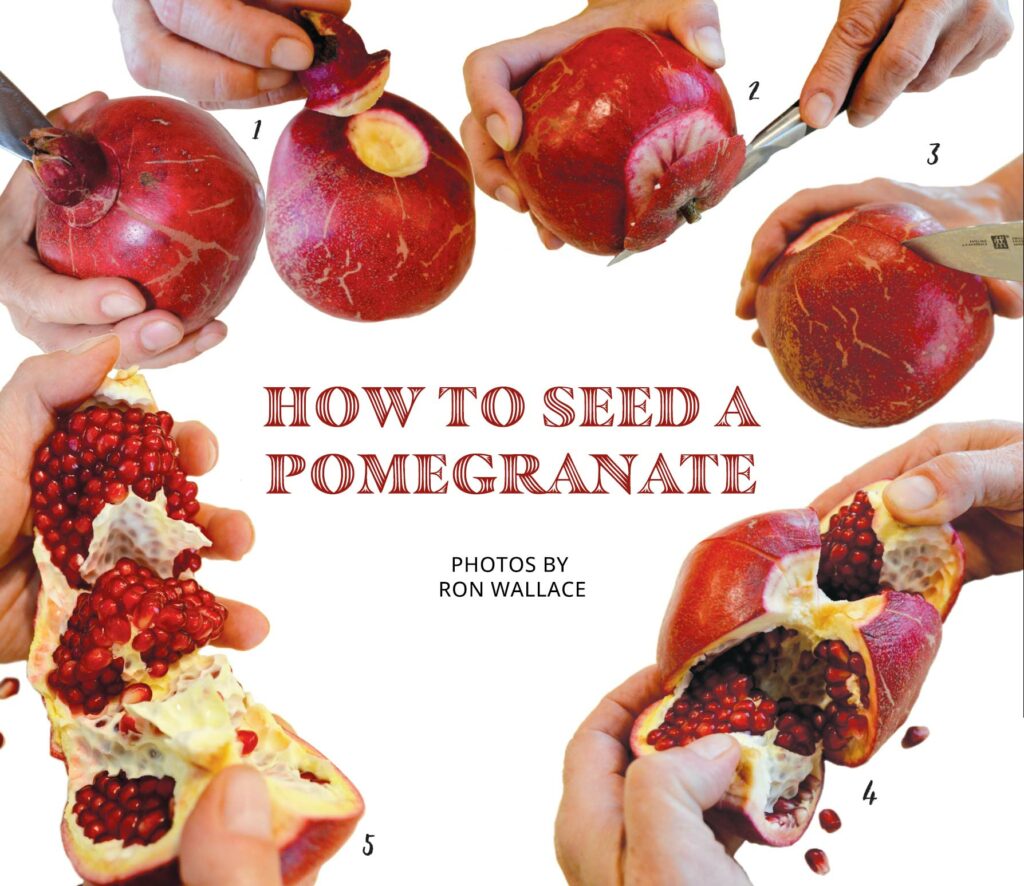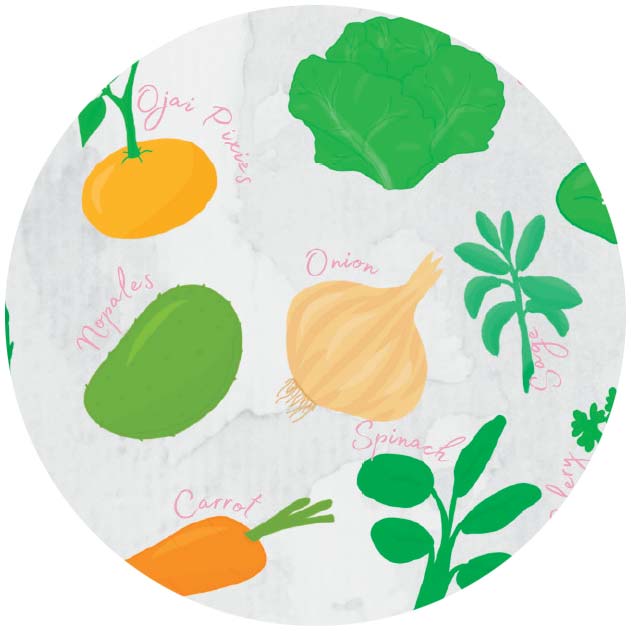
Pomegranate season reaches its peak in the fall here in California. Now abundantly grown in California and Arizona, pomegranates are an ancient fruit native to Iran. They’re popular in Middle Eastern cuisine, where their use is inspired and resourceful, and my recipes here try to have the same effect.
It is the vibrant flavor of this amazing fruit that brings me back to pomegranates for my fall recipes, time after time. The deep, hearty, earthy flavors of fall benefit tremendously from the zing of this versatile fruit, bringing balance and contrast to whatever ingredients they dance with.
Everything in these recipes can be sourced locally. I encourage you to go to local stores and our county’s farmers’ markets. The farmers there are committed to their chosen livelihood, and many enjoy the community connectedness of meeting, talking with and feeling the love from the people who eat the fruits of the farmers’ labors.




Yes, it can be a messy chore, but this method keeps the seeds intact, so there are no stained fingers or sticky juice.
- Using a paring knife, cut around the crown (calyx) of the pomegranate; angle the knife blade so that when you remove the crown, a cone-shaped piece comes out.
- Slice off stem end, being careful not to go too deep; you don’t want to cut the seeds.
- Look for the naturally occurring vertical ridges on the skin, and lightly score at each ridge.
- Break open the pomegranate at each scored section (like you’re segmenting an orange).
- Peel off the outer skin and membrane and gently break the seeds from the pomegranate.
MORE ABOUT THIS FANCY FALL FRUIT
The seeds (called arils) are rich in antioxidants and minerals.
Native to the Middle East, pomegranate grows very well in Southern California.
The trees have been known to live for over 200 years.
It can be stored for 2 months in the fridge.
This “superfood” has been used medicinally for thousands of years.
It’s classified as a berry.
Pomegranates are not grown commercially here, but check out FallenFruit.org to see where you can forage them locally.
ABOUT THE CONTRIBUTOR
Former Ojai chef Marcus Hollinsworth now travels the mountain ranges of Colorado and Central Texas as a restaurant consultant. Even with accolades like “Top Chef Central Texas,” award-winning columnist, “Chopped” contestant and local TV restaurant rep, he thrills at running the Rocky Mountain trails. Follow on Instagram @ chefmarcushollinsworth








